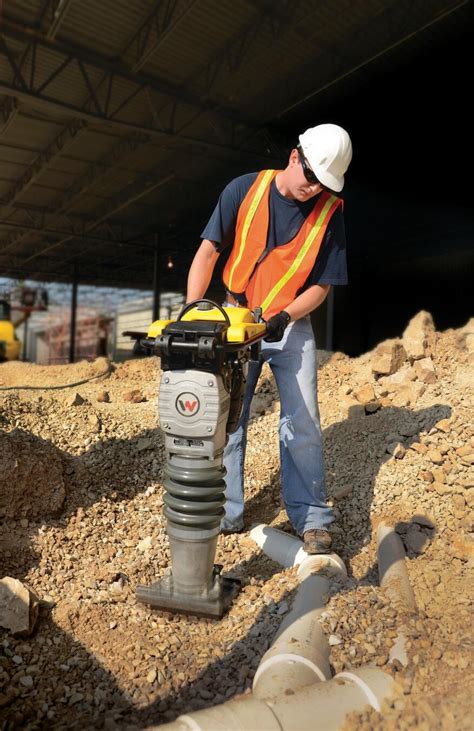compacting soil with excavator The following steps outline the general process for compacting soil in these projects: Excavation: Remove any topsoil, vegetation, or debris to expose the subgrade soil. The depth of excavation depends on the thickness of the paving material and the required sub-base and base layers. With exceptional digging, lifting and swing capacity, Cat mini excavators help you get jobs done faster. A spacious cab and ergonomic controls keep you working comfortably, while a variety of Cat attachments such as augers and hammers provide even more versatility.
0 · Soil Compaction Equipment
1 · Soil Compaction
2 · How to Compact Soil After Excavation: Your Step
3 · Different Types of Soil Compaction Equipment: Types of Rollers
We offer a large selection of aftermarket mini excavator buckets compatible with popular brands such as Kubota, Cat, John Deere, and more. Options include quick attach and direct pin-ons hookups, teeth buckets or a smooth lip, and an optional bolt-on reversible edge.
Learn about different types of rollers and other soil compaction equipments for various soil types and moisture conditions. Find out how rammers, vibrating plate compactors, vibro tampers, smooth wheeled rollers, sheepsfoot rollers and pneumatic tyred rollers work.Learn about different types of rollers and other soil compaction equipments for various soil types and moisture conditions. Find out how rammers, vibrating plate compactors, vibro tampers, smooth wheeled rollers, sheepsfoot rollers and pneumatic tyred rollers work. Compaction after excavation is the process of pressing down loosened soil to eliminate air pockets and increase soil density. This ensures that the ground can support structures and prevents future issues like settling, erosion, or water pooling.The following steps outline the general process for compacting soil in these projects: Excavation: Remove any topsoil, vegetation, or debris to expose the subgrade soil. The depth of excavation depends on the thickness of the paving material and the required sub-base and base layers.
Learn about different types of soil compaction equipment, such as rammers, vibratory compactors, rollers and more. Find out how to select the right equipment for your project based on the type of soil, area and force required.
A compactor is a device that compresses dirt, soil or gravel to create a stable surface for construction or landscaping. Learn about 15 types of compactors, such as rammers, plates and rollers, and how to choose the right one for your project.
Learn how to choose the right equipment for different types of soils and job sites. Compare rammers, plate compactors, and trench rollers based on soil characteristics, size, and vibration.

There are three types of compaction equipment: static, vibratory, and impact, points out Hoffman. Static rollers come in three-wheeled, tandem, or pneumatic-tired designs and rely on the weight of the drum and machine to compact material. They work best for compacting thin layers of soil or asphalt. Learn about four primary types of compaction equipment: smooth drum, padfoot, tandem and combination rollers. Each type has unique features and applications for different soil types and.
There are three main categories of plate compactors: a single plate compactor, a reversible plate compactor, and a high performance/heavy-duty plate compactor. Single plate compactors go in a forward direction only, and are probably the most popular choice for smaller asphalt jobs. Soil compaction is a fundamental aspect of construction and landscaping projects, requiring precise techniques and dependable equipment. Our comprehensive guide has provided the insights you need to master soil compaction, from equipment selection to best practices and expert tips for success.
Learn about different types of rollers and other soil compaction equipments for various soil types and moisture conditions. Find out how rammers, vibrating plate compactors, vibro tampers, smooth wheeled rollers, sheepsfoot rollers and pneumatic tyred rollers work.
Compaction after excavation is the process of pressing down loosened soil to eliminate air pockets and increase soil density. This ensures that the ground can support structures and prevents future issues like settling, erosion, or water pooling.The following steps outline the general process for compacting soil in these projects: Excavation: Remove any topsoil, vegetation, or debris to expose the subgrade soil. The depth of excavation depends on the thickness of the paving material and the required sub-base and base layers. Learn about different types of soil compaction equipment, such as rammers, vibratory compactors, rollers and more. Find out how to select the right equipment for your project based on the type of soil, area and force required.
A compactor is a device that compresses dirt, soil or gravel to create a stable surface for construction or landscaping. Learn about 15 types of compactors, such as rammers, plates and rollers, and how to choose the right one for your project. Learn how to choose the right equipment for different types of soils and job sites. Compare rammers, plate compactors, and trench rollers based on soil characteristics, size, and vibration. There are three types of compaction equipment: static, vibratory, and impact, points out Hoffman. Static rollers come in three-wheeled, tandem, or pneumatic-tired designs and rely on the weight of the drum and machine to compact material. They work best for compacting thin layers of soil or asphalt.
Learn about four primary types of compaction equipment: smooth drum, padfoot, tandem and combination rollers. Each type has unique features and applications for different soil types and.There are three main categories of plate compactors: a single plate compactor, a reversible plate compactor, and a high performance/heavy-duty plate compactor. Single plate compactors go in a forward direction only, and are probably the most popular choice for smaller asphalt jobs.
skid steer attachments wood chipper
This mini excavator rental is ideal for work in compact spaces without sacrificing .
compacting soil with excavator|Soil Compaction Equipment